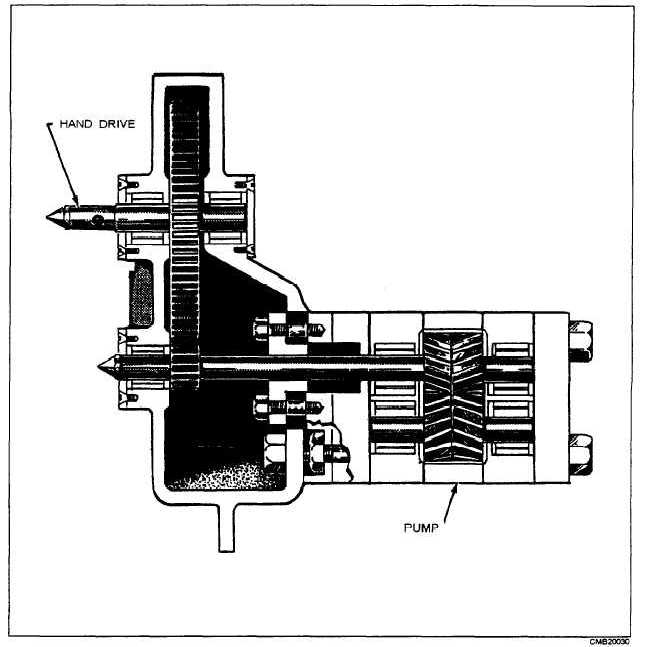
Figure 3-8. - Herringbone gear pump.
Valves must be accurate in the control of fluid flow and pressure and the sequence of operation. Leakage between the valve element and the valve seat is reduced to a negligible quantity by precision- machined surfaces, resulting in carefully controlled clearances. This is one of the very important reasons for minimizing contamination in the system. Contamination causes valves to stick, plugs small orifices, and causes abrasions of the valve seating surfaces which will result in leakage between the valve element and valve seat when the valve is closed. Any of these can result in inefficient operation or complete stoppage of the equipment.
Valves may be controlled manually, electrically, pneumatically, mechanically, hydraulically, or by combinations of two or more methods. Factors that determine the method of control include the purpose of the valve, the design and purpose of the system, the location of the valve within the system, and the availability of the source of power.
Valves are classified according to their use: flow control, pressure control, and directional control. Some of these valves have multiple functions that fall into more than one classification. 3-8
Continue Reading